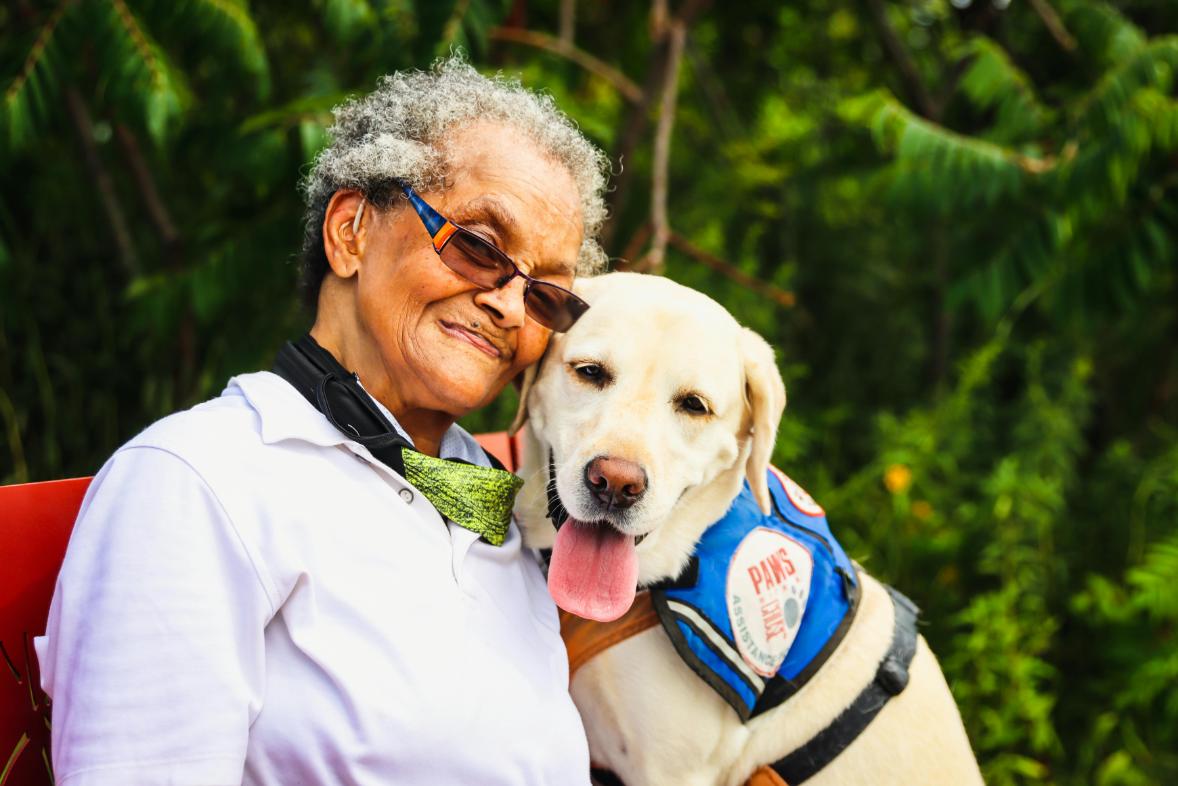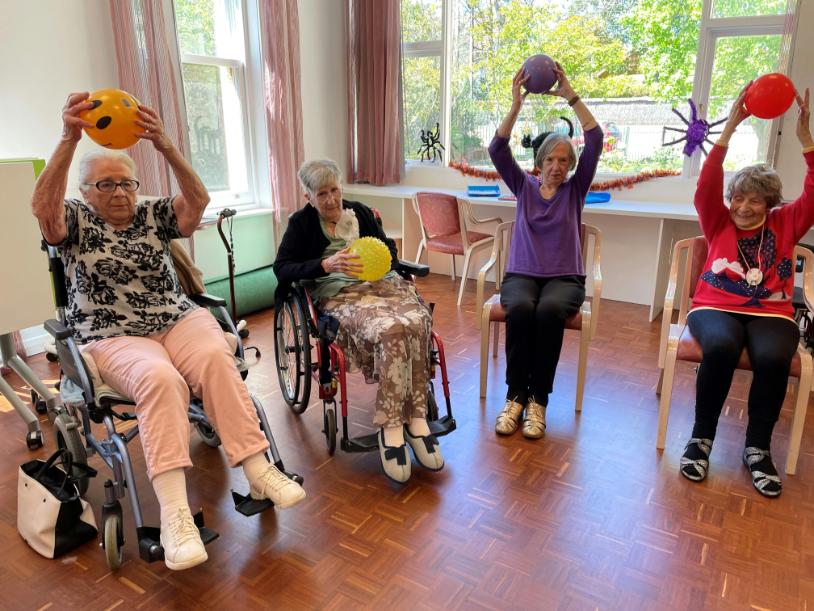What Are the Benefits of Pet Therapy?

At Benarty View Care Home, we recognise the profound impact that companionship and connection can have on wellbeing. One of the most heartwarming and effective ways we support our residents’ emotional and physical health is through pet therapy – also known as animal assisted therapy.
But what exactly is pet therapy, and why is it becoming increasingly common in healthcare settings such as nursing homes?
In this blog, we’ll explore what are the benefits of pet therapy, how therapy animals can support both physical and mental health, and the science behind the human-animal bond.
What is Pet Therapy?
Pet therapy – or more formally, animal assisted therapy (AAT) – is a structured interaction between a person and a trained animal, guided by a healthcare professional or pet handler, to help improve a person's health and wellbeing. This approach is often part of a broader therapy plan and is increasingly used in settings like care homes, hospitals, and even schools.
There are also animal assisted activities (AAA), which are less formal but equally beneficial. These involve spending time with therapy animals, such as dogs, cats, or even guinea pigs, in a way that encourages joy, social interaction, and relaxation.
Whether as part of a formal treatment or an informal visit, therapy pets offer a calming effect and contribute to improved mental health, physical activity, and quality of life.
The Mental Health Benefits of Pet Therapy
1. Reducing Stress and Anxiety
One of the most immediate and observable benefits of pet therapy is its ability to decrease stress and reduce anxiety levels. The simple act of stroking a dog or sitting beside a purring cat can prompt the release of serotonin and oxytocin – the body’s natural feel-good chemicals. This in turn helps to lower blood pressure, slow the heart rate, and ease tension.
For residents living with mental health conditions such as depression or anxiety, regular interaction with therapy pets can provide vital emotional support and a welcome distraction from negative thoughts.
2. Combating Loneliness
Loneliness is a significant issue among older adults, especially those who live in nursing homes or are away from their families. Pet therapy programs foster meaningful human-animal interactions that can alleviate feelings of isolation. For some residents, therapy dogs become trusted companions they look forward to seeing each week.
3. Enhancing Emotional Wellbeing
The unconditional love and non-judgemental presence of animals have a unique power to boost self-esteem and bring emotional comfort. The presence of loving creatures helps many residents open up emotionally, express affection, or simply feel understood – particularly beneficial for individuals living with dementia or communication challenges.
Physical Health Benefits of Pet Therapy
1. Supporting Cardiovascular Health
Many research studies have shown that interaction with animals – especially dog therapy – can contribute to better cardiovascular health. Residents who engage in therapy sessions may experience lower blood pressure, a slower heart rate, and reduced levels of the stress hormone cortisol, all of which are beneficial for heart health.
2. Increasing Physical Activity
While not every interaction involves movement, some therapy sessions encourage gentle physical activity, such as walking a therapy dog or playing fetch. This helps residents increase physical activity levels in a safe and enjoyable way, supporting joint movement, balance, and overall physical health.
Even petting or grooming an animal can support improving motor skills and fine motor control, especially important for residents recovering from stroke or with health conditions that affect mobility.
3. Pain Management and Relaxation
The calming effect of animals can also be helpful in managing pain. Studies suggest that spending time with pets can help divert attention away from discomfort, reduce reliance on medication, and promote relaxation. It’s a gentle, drug-free way to support those with chronic pain or during physical therapy sessions.
Social and Cognitive Benefits
1. Encouraging Social Interaction
Pet therapy can act as a powerful social bridge, encouraging verbal communication, eye contact, and shared experiences between residents, family members, and healthcare providers. A visit from a friendly dog or other animals often sparks conversation and storytelling, bringing people together and reducing social barriers.
2. Stimulating Memory and Cognitive Function
For residents with dementia or Alzheimer’s disease, therapy pets can stimulate memory recall and engagement. Familiar animal sounds, textures, or smells can spark pleasant memories and encourage participation in therapy or animal assisted activities. This provides not only mental stimulation but emotional enrichment.
The Science Behind the Human-Animal Bond
So why do animals have such a powerful effect on us?
The answer lies in the science of the human-animal bond. This bond triggers the release of oxytocin – the same hormone involved in bonding between humans. It creates feelings of trust, comfort, and love.
Research studies confirm that regular human-animal interactions can significantly improve mental health, enhance emotional regulation, and support faster recovery from illness or surgery.
Which Animals Are Used in Pet Therapy?
While therapy dogs are the most common choice, many animals can be used in pet therapy programs, depending on the needs of the residents and the environment. These include:
- undefined
- undefined
- undefined
- undefined
It’s essential that all therapy animals are trained, well-socialised, and handled by professionals to ensure safety and maximise the benefits.
Pet Therapy in the Healthcare Setting
In a healthcare setting like Benarty View Care Home, animal assisted therapy can be seamlessly integrated into daily routines, rehabilitation programmes, or leisure activities.
Visits are often arranged on a regular basis and adapted to individual preferences and health conditions. A resident might enjoy a 10-minute cuddle with a cat, a walk with a therapy dog, or simply watching pets interact from a distance.
Sessions are guided by healthcare professionals, carers, or certified pet handlers, who ensure the experience is safe, enriching, and aligned with each individual’s treatment goals.
Are There Any Risks?
As with any treatment, it’s important to consider potential risks. These are usually minimal and well-managed with proper precautions.
Some things to consider include:
- undefined
- undefined
- undefined
- undefined
All therapy animals used in professional settings undergo training, health checks, and behaviour assessments to ensure they are suitable for work with vulnerable individuals.
Real Stories: Pet Therapy at Benarty View Care Home
At Benarty View, we’ve seen first-hand the transformative effects of pet therapy. One resident, who had previously been withdrawn and reluctant to speak, now lights up whenever the therapy dog visits. Another resident with mobility issues has made significant progress in joint movement and motor skills through gentle grooming and play sessions.
The presence of therapy animals doesn’t just benefit the residents – it lifts the spirits of staff, carers, and family members, creating a joyful and connected environment.
The Lasting Benefits of Pet Therapy
So, what are the benefits of pet therapy?
From stress reduction and lower blood pressure to enhanced social skills and improved physical health, the rewards are wide-ranging and deeply meaningful. Pet therapy supports both the body and the mind, providing comfort, companionship, and motivation for those navigating the challenges of ageing or illness.
At Benarty View Care Home, we’re proud to include animal assisted activities as part of our commitment to holistic, person-centred care. Because sometimes, the best therapy comes with four legs, a wagging tail, and a warm heart.
Interested in learning more about our pet therapy programme at Benarty View Care Home?
Get in touch with our friendly team today to find out how we support residents through meaningful activities that bring joy, connection, and comfort.






